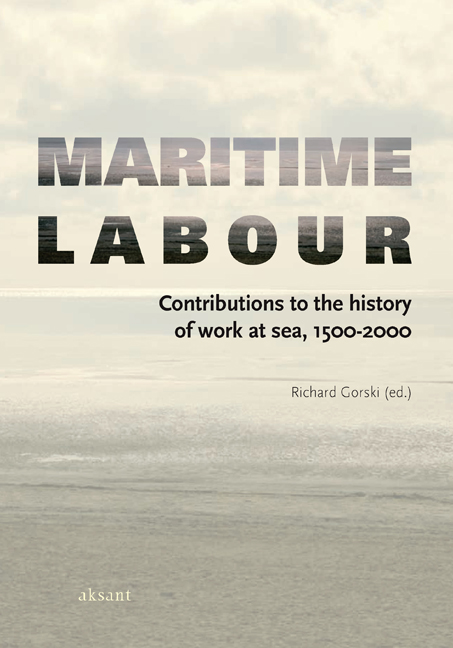Book contents
- Frontmatter
- Contents
- Introduction
- Six Cross-sections of the Dutch Maritime Labour Market: A Preliminary Reconstruction and its Implications (1610-1850)
- On Maritime Labour and Maritime Labour Markets in Germany, 1700-1900
- Swedish Naval Personnel in the Merchant Marine and in Foreign Naval Service in the Eighteenth Century
- Quantifying British Seafarers, 1789-1828
- ‘But for the Loves of the Fishes’: Maritime Labour and Ecological Culture in Nineteenth-century Newfoundland
- The Shipping Federation and the Free Labour Movement: A Comparative Study of Waterfront and Maritime Industrial Relations, c.1889-1891
- Health and Safety Aboard British Merchant Ships: The Case of First Aid Instruction, 1881-1908
- British Merchant Marine Engineer Licensing, 1865-1925
- Transatlantic Fishers: New England and British Trawlermen, 1960-1972
- Masters and chiefs: Enabling globalization, 1975-1995
- About the Contributors
Swedish Naval Personnel in the Merchant Marine and in Foreign Naval Service in the Eighteenth Century
Published online by Cambridge University Press: 26 January 2021
- Frontmatter
- Contents
- Introduction
- Six Cross-sections of the Dutch Maritime Labour Market: A Preliminary Reconstruction and its Implications (1610-1850)
- On Maritime Labour and Maritime Labour Markets in Germany, 1700-1900
- Swedish Naval Personnel in the Merchant Marine and in Foreign Naval Service in the Eighteenth Century
- Quantifying British Seafarers, 1789-1828
- ‘But for the Loves of the Fishes’: Maritime Labour and Ecological Culture in Nineteenth-century Newfoundland
- The Shipping Federation and the Free Labour Movement: A Comparative Study of Waterfront and Maritime Industrial Relations, c.1889-1891
- Health and Safety Aboard British Merchant Ships: The Case of First Aid Instruction, 1881-1908
- British Merchant Marine Engineer Licensing, 1865-1925
- Transatlantic Fishers: New England and British Trawlermen, 1960-1972
- Masters and chiefs: Enabling globalization, 1975-1995
- About the Contributors
Summary
Introduction
During the eighteenth century Sweden was mostly at peace. The severe setbacks and losses experienced in the Great Nordic War (1700-1720) had once again reduced Sweden to a small nation on the northern fringes of Europe. New social forces started to influence its development and the economy, especially trade, began to expand. However, the military continued to be a major social force even during peacetime. Professor Gunnar Artéus has described the eighteenth century as a period of thorough militarization of society. The different branches of the armed forces employed more than ten per cent of the adult male population of Sweden (including Finland), and a major part of state expenditure went on military needs. The role of the armed forces in society during the eighteenth and nineteenth centuries has recently been the object of new research, underlining social and economic aspects rather than military. From this point of view the eighteenth-century Swedish Navy offers interesting possibilities for research. Naval personnel could sell their navigational skills on an international labour market, combining a career in the navy with work abroad or in the merchant marine. The aim of this article is to discover aggregated trends and tendencies in the careers of naval personnel during the eighteenth century by using naval merit lists delivered by them to the Admiralty.
ii. Sweden's naval merit lists
In 1732 the Swedish government laid down formal rules for merit lists for persons in naval service. The reason given for this action was the Admiralty's ambition to appoint the most capable and deserving persons to available positions. About two decades later, in 1754, it was decreed that all personnel should submit a merit list every three years. At the same time regulations were made for how to formally construct a list. It was to comprise ‘one column with dates for previous assignments, and a broader column with dates and short descriptions of the character of former assignments’. Merit lists or similar accounts were also needed in order to be entitled to pension funds. The Swedish Admiralty had already specified rules for the creation of a retirement fund for navy personnel (Amiralitets krigsmannakassan) in 1642 whereby part of the annual salary was to be paid into the fund by navy personnel.
- Type
- Chapter
- Information
- Maritime LabourContributions to the History of Work at Sea, 1500–2000, pp. 61 - 82Publisher: Amsterdam University PressPrint publication year: 2008



